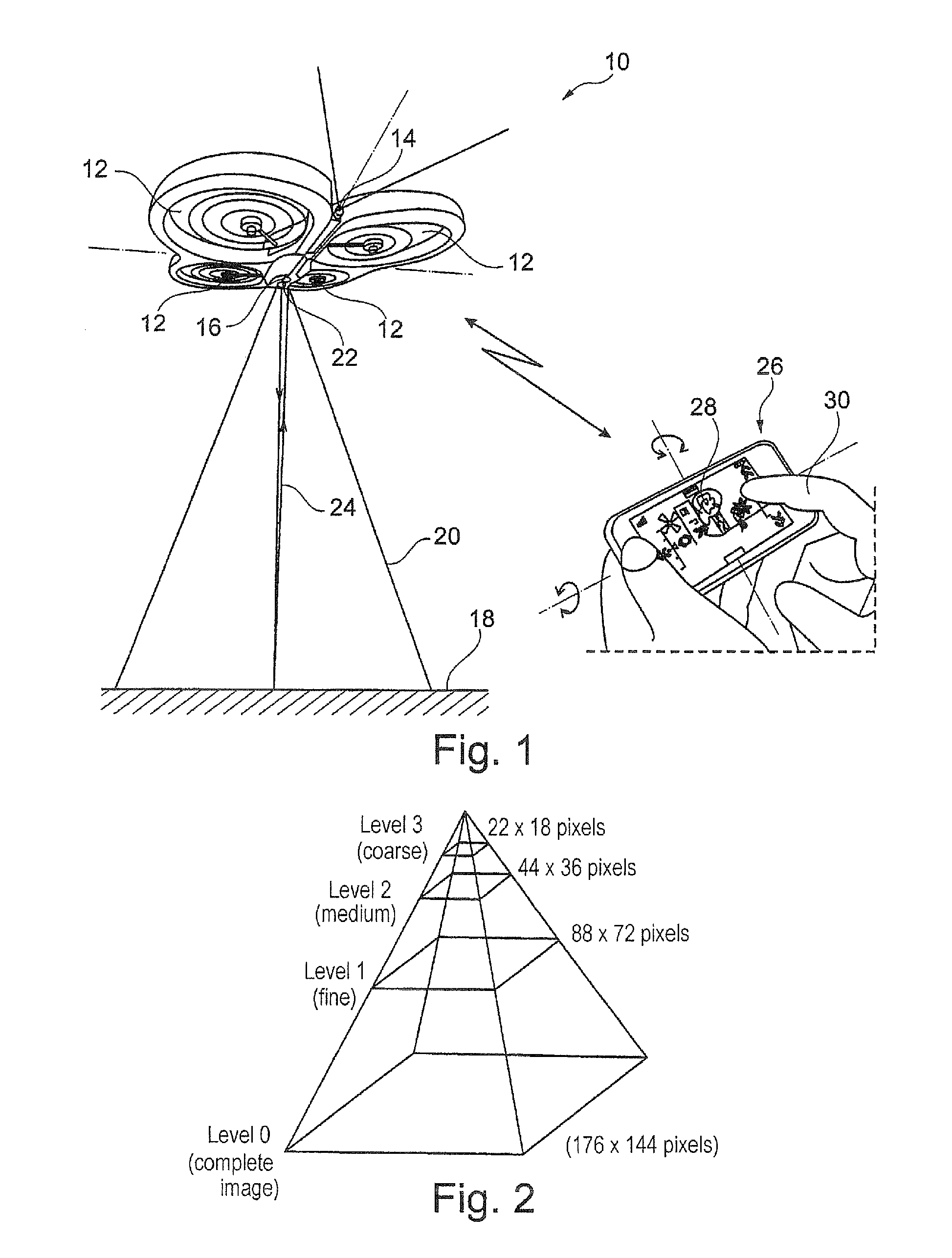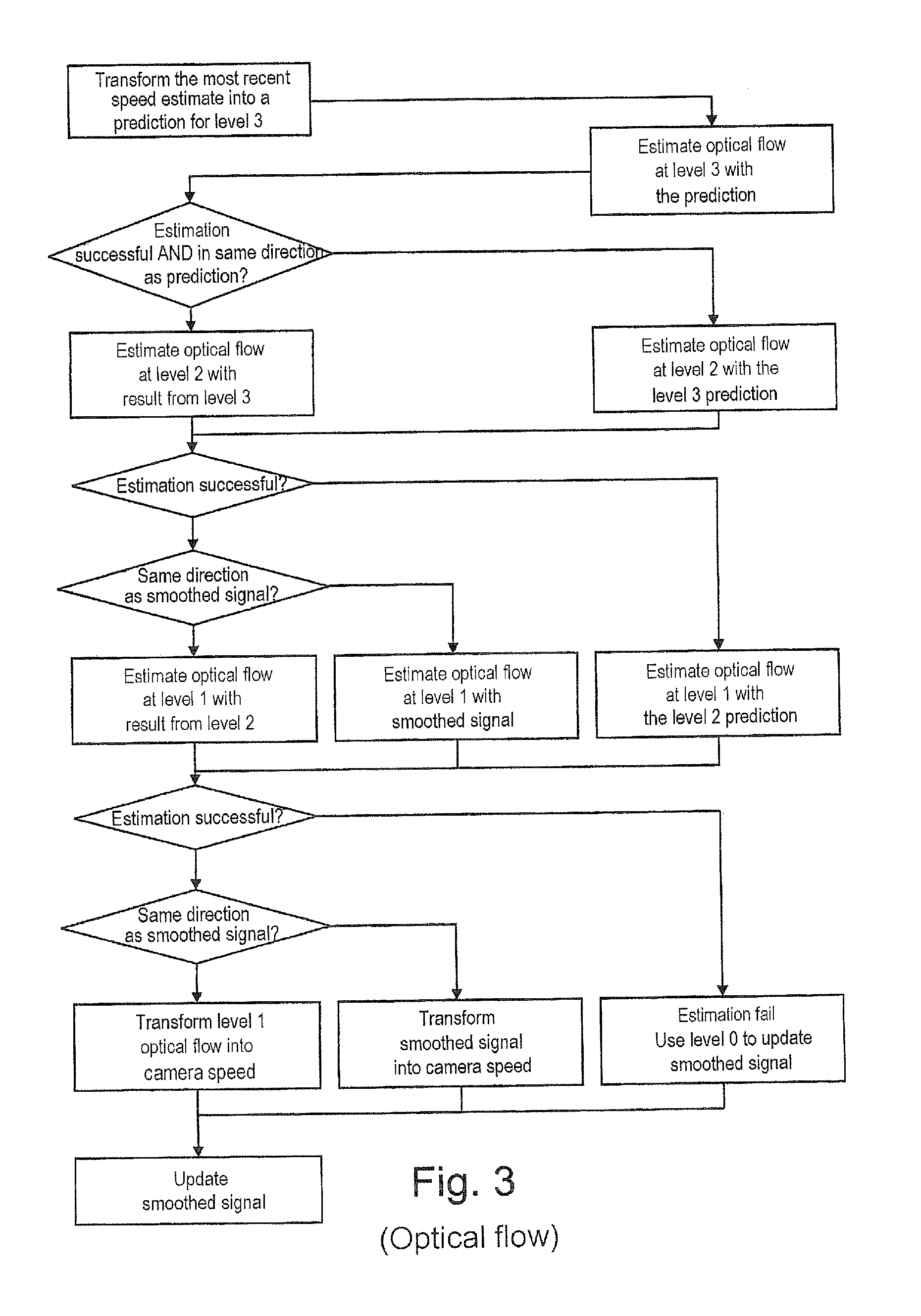Method of evaluating the horizontal speed of a drone, in particular a drone capable of performing hovering flight under autopilot
a drone and autopilot technology, applied in the field of piloting drones, can solve the problems of inability to give a satisfactory estimate of the speed of the drone, and the accuracy of the technique is not high enough
- Summary
- Abstract
- Description
- Claims
- Application Information
AI Technical Summary
Benefits of technology
Problems solved by technology
Method used
Image
Examples
Embodiment Construction
[0045]There follows a description of an implementation of the invention.
[0046]In FIG. 1, reference 10 is an overall reference to a drone, e.g. a quadricopter such as the AR.Drone model from Parrot S A, Paris, France. The drone 10 has four coplanar rotors 12 having their motors controlled independently by an integrated flying and attitude-control system.
[0047]The drone 10 also includes a forward-looking first camera 14 serving to obtain an image of the scene towards which the drone is headed, and a downwardly-looking vertically-oriented camera 16 suitable for picking up successive digital images of the terrain 18 over which the drone is flying. The viewing angle of this camera, shown diagrammatically at 20, may for example have a diagonal of 64° with a resolution of 176×144 pixels (these values naturally being given purely by way of illustration).
[0048]The drone 10 is also provided with an ultrasound altimeter 22 that emits a beam 24 towards the ground serving to determine at all tim...
PUM
 Login to View More
Login to View More Abstract
Description
Claims
Application Information
 Login to View More
Login to View More - R&D
- Intellectual Property
- Life Sciences
- Materials
- Tech Scout
- Unparalleled Data Quality
- Higher Quality Content
- 60% Fewer Hallucinations
Browse by: Latest US Patents, China's latest patents, Technical Efficacy Thesaurus, Application Domain, Technology Topic, Popular Technical Reports.
© 2025 PatSnap. All rights reserved.Legal|Privacy policy|Modern Slavery Act Transparency Statement|Sitemap|About US| Contact US: help@patsnap.com



